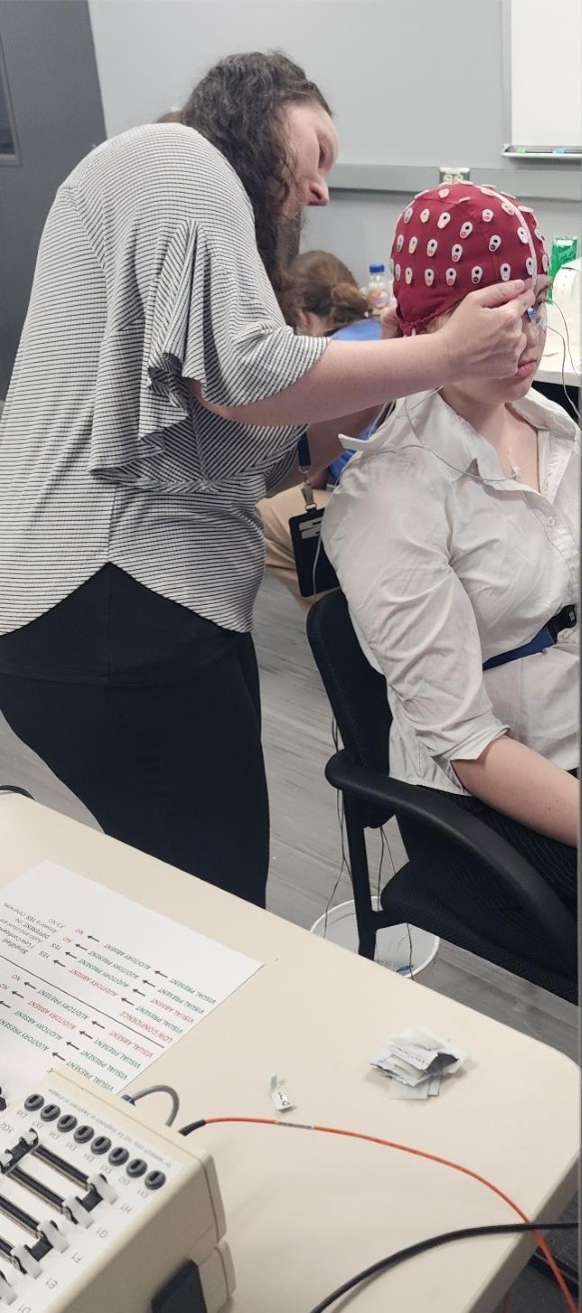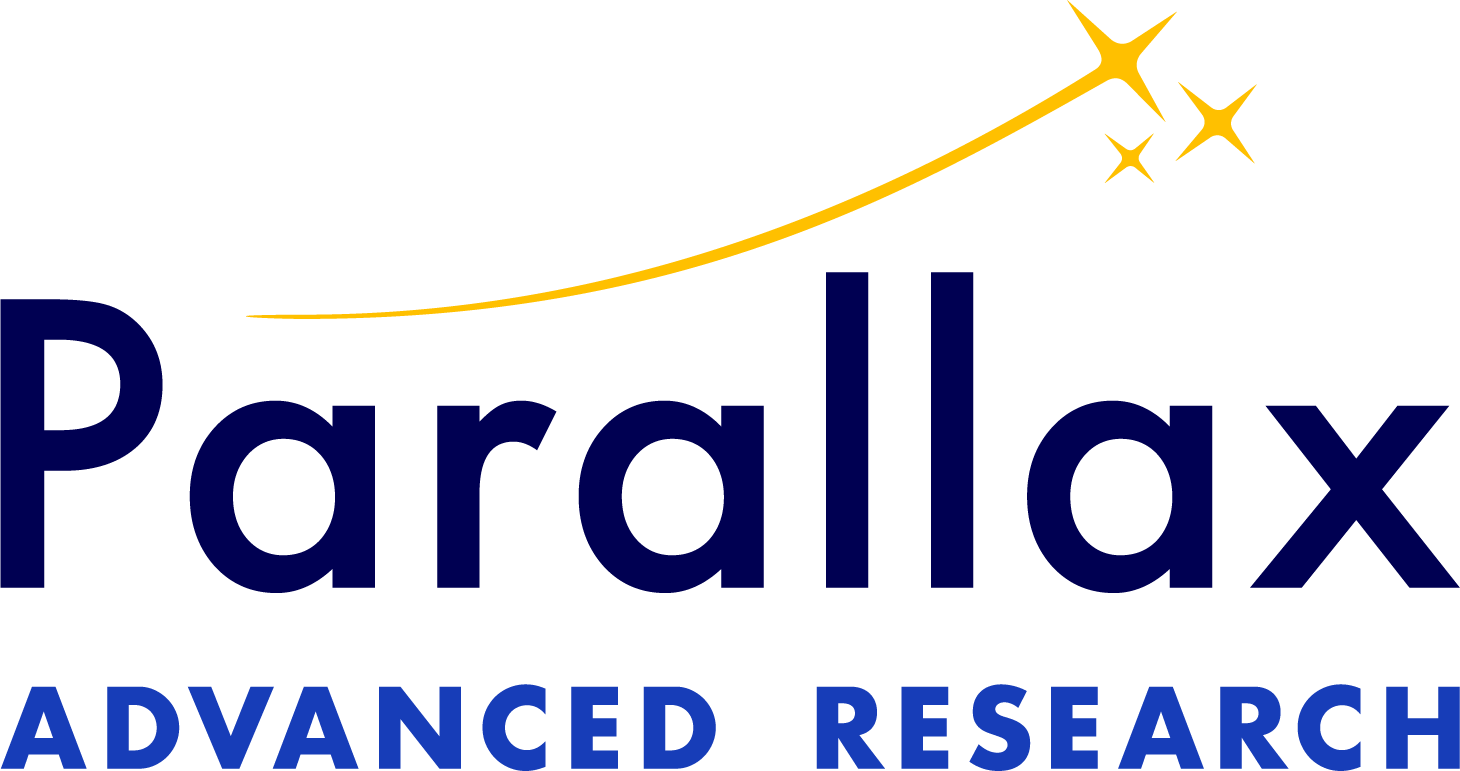In the latest installment of our Innovator Spotlight, we spoke with Anna Maresca, researcher and lab manager at Parallax Advanced Research and Ohio Aerospace Institute, whose work bridges cognitive science, human-machine teaming, and decision support for complex defense missions. With over a decade of experience supporting the Air Force Research Laboratory (AFRL) and the 711th Human Performance Wing, she leads high-fidelity human performance studies that shape operational tools and workflows. Her expertise includes scenario development, physiological data integration, and the design of adaptive human-machine systems.
Q: What originally sparked your interest in human performance and decision-making, and how did that lead you into applied research with Parallax/OAI?
“I’ve always just been interested in how people think and process information—especially in fast-paced, dynamic environments. Psychology was the natural route to try and get a better understanding of that, and pretty early on, I realized I wanted to apply that—I didn’t want to be theoretical. The opportunity came up through a professor to start an internship in the field. That led to working with Parallax and it just kind of went from there. My first job out of school was with Parallax, and I’ve stayed ever since.”
Q: You’ve been with Parallax/OAI for over a decade. How has your role evolved, and what has kept you passionate about the work?
“When I first started, I was doing basic support—participant testing, setting up equipment, helping write the experiments, very low-level data analysis. And now I lead experiments, I run the lab, I support multiple programs. I really get to shape the research and shape the design of experiments and testbeds. It’s changed a lot. What keeps me interested is that the research is always evolving. There’s always a new question—we never run the same experiment twice.”
Q: What does your day-to-day look like when you’re designing or running experiments — especially those that involve human subjects and real-world simulations?
“A typical day could be programming an experiment in Qualtrics or helping build a simulation in MetaVR or MUSE. I might be working with eye tracking or EEG or other physiological tools. There’s a lot of coordination with participants—making sure that data is being collected and stored properly. Sometimes it’s trouble-shooting a bug in the software or figuring out why the simulation isn’t syncing with the sensors. It really varies.”
Q: What are some of the challenges you face when using a variety of tools to measure human performance in complex experiments?
“One of the biggest challenges is making sure that all the technology plays nice together. You might have eye tracking running at the same time as EEG, and you’re also trying to run a simulation and log their keystrokes and clicks—and you need everything to be synced so that it makes sense when you analyze it. One small version update in one piece of software can mess it all up. A lot of times it’s trial and error and testing. You don’t want to find that problem when your participant is already sitting there.”
Q: Is there a project or moment when you really saw your research make a difference — maybe helping a team work more effectively or shaping how a system is designed?
“We did a study where we looked at decision-making during surveillance tasks. We gave participants these structured analytic techniques—basically visual aids—and saw that it really helped them identify targets more quickly and accurately. That work went into shaping how some of those tools are designed for analysts. It’s nice when you can point to something and say, ‘Yeah, that made a difference.’”

Caption: AnnMaresca (left) measures and adjusts a 64-channel BioSemi EEG (electroencephalogram) cap on research intern Angie Bragg (right), Parallax/OAI, in the lab. The red cap is equipped with multiple electrodes, which must be precisely aligned to accurately measure Angie’s brain activity.
Q: You’ve done a lot of work with AFRL and the 711th Human Performance Wing. What have you learned from those collaborations?
“Working with AFRL and 711th, I’ve learned how to communicate research findings to different kinds of stakeholders. Sometimes you’re talking to a cognitive scientist, and sometimes you’re talking to a program manager or an operator. They all care about different things. I’ve learned how to frame results in a way that’s meaningful to each of them, which helps the research have more impact.”
Q: What breakthrough research or problem are you working on now, and what problem does it solve?
“Right now, we're working with our customers on investigating trust in human-machine teams. We’re trying to figure out what makes someone trust or not trust an automated system—and how that changes over time. We’re looking at different variables like system transparency, how well the system explains its actions, how often it’s right or wrong. The idea is to use those insights to design systems that support the right level of trust—not too much, not too little.”
Q: What advice would you give to someone early in their career who’s interested in applied research or human-machine teaming?
“My advice to someone, in any career field really, is to ask how you can help. Don’t wait to be told what to do. Just jump in and be useful. That mindset goes a long way. For applied research specifically, I’d say: get your hands dirty. Volunteer to help with data collection or running a study. You learn so much from being in the room when things go wrong. And collaborate. Work with people who know different things than you do—that’s where the best research happens.”
###
About Parallax Advanced Research & the Ohio Aerospace Institute
Parallax Advanced Research is an advanced research institute that tackles global challenges through strategic partnerships with government, industry, and academia. It accelerates innovation, addresses critical global issues, and develops groundbreaking ideas with its partners. In 2023, Parallax and the Ohio Aerospace Institute, an aerospace research institute located in Cleveland, OH, formed a collaborative affiliation to drive innovation and technological advancements across Ohio and the nation. The Ohio Aerospace Institute plays a pivotal role in advancing aerospace through collaboration, education, and workforce development. More information can be found at parallaxresearch.org and oai.org.
